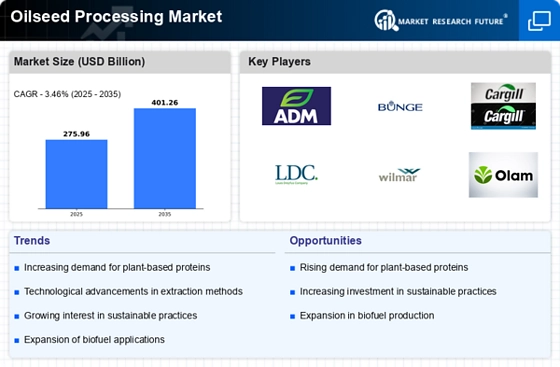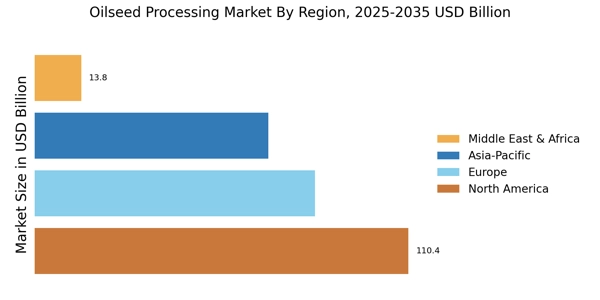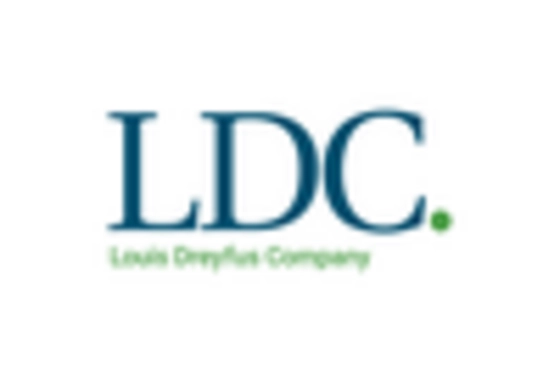Expansion of Biofuels Production
The transition towards renewable energy sources is propelling the Oilseed Processing Market, particularly in the biofuels sector. Oilseeds, especially canola and soybean, are increasingly utilized for biodiesel production. In 2025, the biodiesel market is anticipated to expand, with oilseed-derived biodiesel accounting for a substantial share. This growth is driven by government policies promoting renewable energy and reducing carbon emissions. Consequently, the Oilseed Processing Market is likely to see increased investments in processing facilities to cater to the burgeoning demand for biofuels, thereby enhancing overall market dynamics.
Rising Demand for Plant-Based Proteins
The increasing consumer preference for plant-based diets is driving the Oilseed Processing Market. As more individuals seek alternatives to animal proteins, oilseeds such as soybeans and peas are gaining traction. This shift is reflected in the market, with the plant-based protein segment projected to grow significantly. In 2025, the demand for soy protein isolate is expected to reach approximately 1.5 million metric tons, indicating a robust growth trajectory. The Oilseed Processing Market is thus positioned to benefit from this trend, as processors adapt to meet the rising demand for protein-rich products derived from oilseeds.
Increased Use of Oilseeds in Animal Feed
The demand for high-quality animal feed is driving the Oilseed Processing Market, particularly in the livestock sector. Oilseed meals, such as soybean meal, are essential components of animal feed due to their high protein content. In 2025, the animal feed market is expected to grow, with oilseed meals playing a crucial role in meeting the nutritional needs of livestock. This trend is further supported by the rising global meat consumption, which necessitates the use of efficient feed sources. The Oilseed Processing Market is thus positioned to benefit from this increased utilization of oilseeds in animal nutrition.
Growing Health Consciousness Among Consumers
The rising awareness of health and nutrition is influencing consumer choices, thereby impacting the Oilseed Processing Market. Consumers are increasingly seeking oils that are perceived as healthier, such as those high in unsaturated fats and omega-3 fatty acids. This trend is evident in the growing popularity of oils derived from flaxseed and hempseed. In 2025, the market for health-oriented oil products is projected to expand, as consumers prioritize functional foods. The Oilseed Processing Market is likely to adapt by focusing on the production of health-centric oil products, catering to this evolving consumer preference.
Technological Innovations in Processing Techniques
Advancements in processing technologies are transforming the Oilseed Processing Market. Innovations such as cold pressing and enzymatic extraction are enhancing oil yield and quality, making oilseed processing more efficient. These technologies not only improve the extraction process but also reduce waste, aligning with sustainability goals. In 2025, the adoption of these advanced techniques is expected to increase, as processors seek to optimize production and meet consumer demands for high-quality oil products. The Oilseed Processing Market stands to gain from these technological improvements, which may lead to higher profit margins and reduced operational costs.


















Leave a Comment